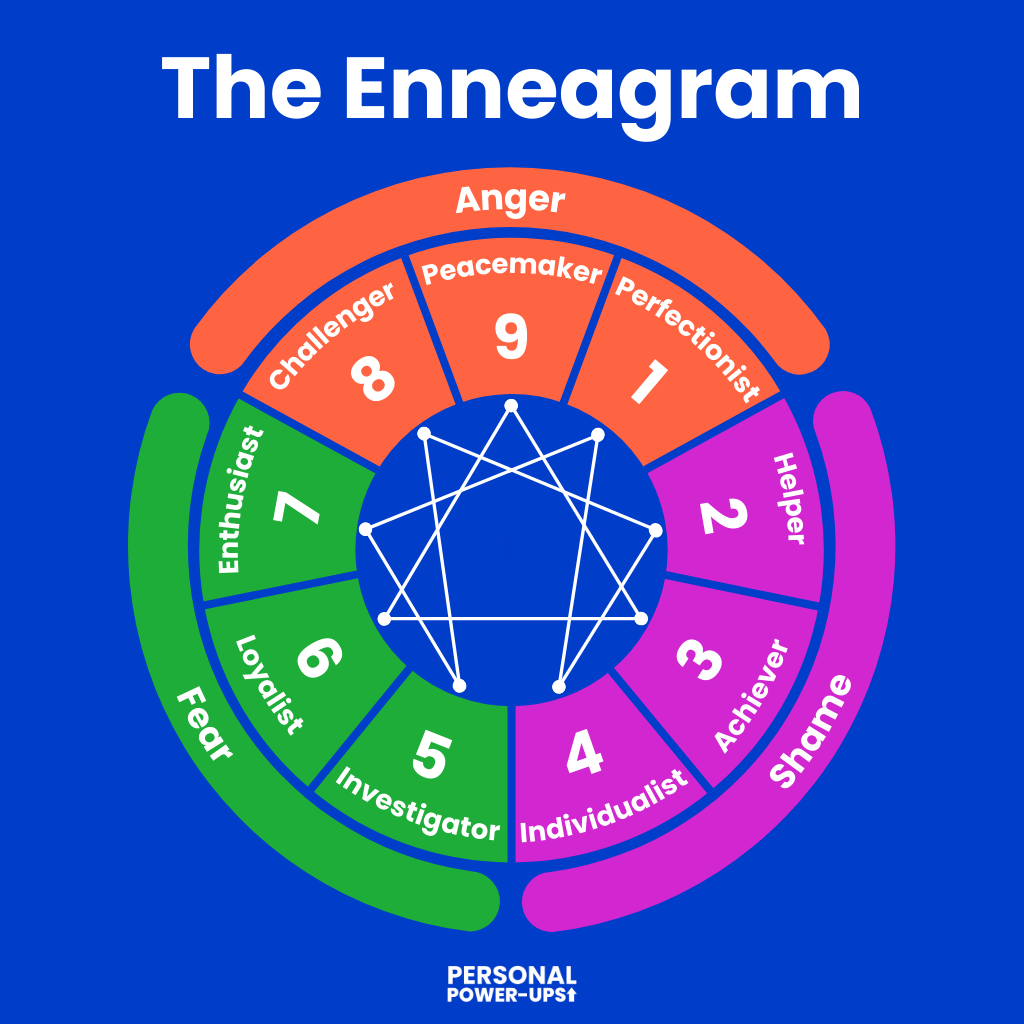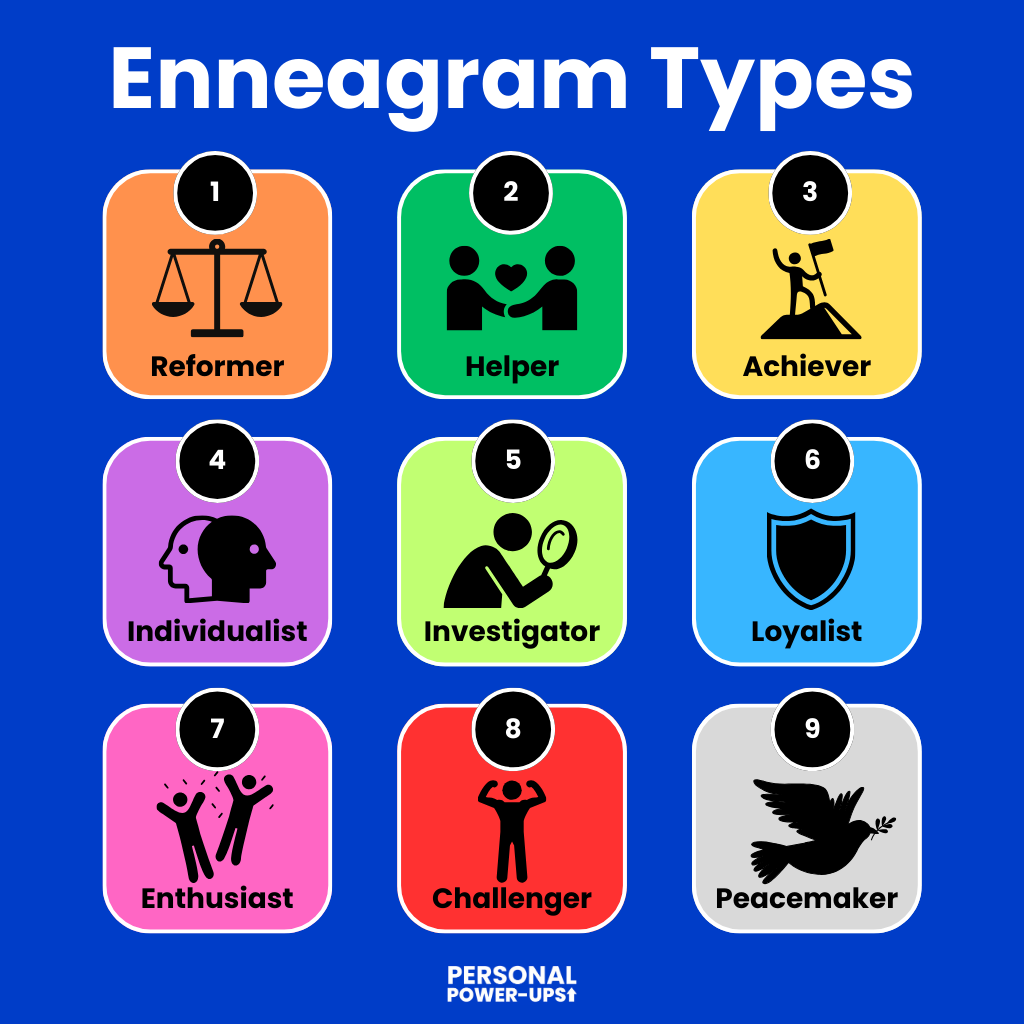What if a simple nine-point system could reveal the deepest patterns of your personality and mindset?
That’s the bold promise of the Enneagram. It’s a personality framework that’s gained a passionate following, and a fair amount of criticism. Some see it as a life-changing tool for self-discovery. Others dismiss it as pseudoscience dressed up in mysticism.
In this article, I’ll give you a clear, balanced overview of what the Enneagram is, what it isn’t, and how you can use it (without getting lost in the hype) to support your personal growth.
Contents

What Is the Enneagram?
The Enneagram is a personality system that maps out nine distinct types, each with its own core motivation. It reveals your core drive: not just what you do, but why you do it.
Its origins are a mix of ancient spiritual traditions and modern psychology. It gained popularity in the 20th century thanks to teachers like Oscar Ichazo and Claudio Naranjo, who blended mysticism with psychological insight.
At its core, the Enneagram consists of:
9 Types
Each person has one dominant type that stays the same throughout life. This type describes your core fear, core desire, and the mental/emotional patterns that stem from those.
More on the types in just a moment.
Wings
Your type sits between two others on the Enneagram circle. For example, Type 1 is flanked by Type 9 and Type 2. Most people lean slightly toward one of these neighbors—this is your wing.
Think of it like a flavor enhancer. A Type 1 with a 9 wing (1w9) might be more introverted and calm, while a 1w2 might be more outwardly driven to help others.
You can have one dominant wing or draw from both over time.
Centers (or Triads)
The nine types are grouped into three centers of intelligence:
Head (Types 5, 6, 7): Driven by fear and anxiety. Focused on safety, strategy, and certainty.
Heart (Types 2, 3, 4): Motivated by shame and image. Focused on connection, recognition, and identity.
Gut (Types 8, 9, 1): Influenced by anger and instinct. Focused on control, autonomy, and doing what’s right.
Your center shapes how you process the world. Knowing yours can reveal your default decision-making style.
▼ Ad
The 9 Enneagram Types at a Glance
Here’s a quick overview of the nine types and their motivations:
Type 1 – The Reformer
Core Fear: Being wrong, corrupt, or defective
Core Desire: To be good, ethical, and right
Focus of Attention: What needs to be improved or corrected
Type 1s have a strong inner critic. They strive for integrity but often battle perfectionism. At their best, they’re principled and fair. Under stress, they can become rigid or self-righteous.
Type 2 – The Helper
Core Fear: Being unloved or unwanted
Core Desire: To feel loved and needed
Focus of Attention: The needs of others
Type 2s are caring and people-focused. They often give without expecting anything back—but secretly long for appreciation. When balanced, they’re generous and warm. When stressed, they may become manipulative or overly self-sacrificing.
Type 3 – The Achiever
Core Fear: Being worthless or failing
Core Desire: To feel valuable and successful
Focus of Attention: Achievements, image, productivity
Driven and adaptable, Type 3s are natural performers. They excel in work and public life—but often lose touch with their true feelings. Growth means learning they’re loved for who they are, not what they do.
Type 4 – The Individualist
Core Fear: Having no identity or significance
Core Desire: To be authentic and deeply understood
Focus of Attention: What’s missing or emotionally intense
Type 4s feel things deeply and seek meaning in everything. They’re creative and emotionally honest—but prone to melancholy and comparison. Their growth path is learning to embrace the present, not idealize the past or future.
Type 5 – The Investigator
Core Fear: Being overwhelmed or helpless
Core Desire: To be capable and self-sufficient
Focus of Attention: Information, boundaries, and detachment
Type 5s crave knowledge and independence. They often withdraw to conserve energy. At their best, they’re brilliant and insightful. But they can struggle with intimacy and hoard time, space, or emotions.
Type 6 – The Loyalist
Core Fear: Being without support or guidance
Core Desire: To feel secure and safe
Focus of Attention: Potential threats and authority figures
Type 6s are loyal, cautious, and always scanning for danger. They can be either rebellious or compliant, depending on how they relate to authority. Growth comes from building inner trust and courage.
Type 7 – The Enthusiast
Core Fear: Being trapped in pain or deprivation
Core Desire: To be satisfied and happy
Focus of Attention: Possibilities, fun, and avoiding discomfort
Type 7s are upbeat, curious, and constantly chasing new experiences. Underneath the joy, though, is a fear of being limited or stuck. They grow by sitting with discomfort and finishing what they start.
Type 8 – The Challenger
Core Fear: Being controlled or vulnerable
Core Desire: To be strong and independent
Focus of Attention: Power dynamics and injustice
Type 8s are assertive and protective, especially of the underdog. They hate weakness in themselves and others. At their best, they’re heroic and just. At their worst, domineering or aggressive.
Type 9 – The Peacemaker
Core Fear: Conflict or loss of connection
Core Desire: To have inner and outer peace
Focus of Attention: Others’ agendas and avoiding tension
Type 9s are easygoing and agreeable—but they often merge with others to keep the peace. They may lose sight of their own needs and opinions. Growth means learning to assert themselves and engage fully.

Criticism and Limitations of the Enneagram
Science
The Enneagram is not backed by science.
This doesn’t mean that it’s worthless, but you should be aware that it’s a pseudoscientific method when applying it to your life. The Enneagram is not a replacement for therapy or medical advice.
Stereotyping
Furthermore, when used incorrectly, it can be used to put people in boxes.
Once you have a good understanding of the different types, it can be easy to categorize the people around you in one of the types and treat them accordingly. That, however, is not how this method is meant to be used. It’s meant as a tool for self-discovery.
▼ Ad
So, Is It Still Useful?
Yes, despite its limitations, the Enneagram is an useful tool for personal growth. Use it as a mirror, not a mask. So, let it guide your growth, not define your identity.
To make it more concrete: use the insights from your type to make use of your strengths and to improve upon your weaknesses.
How to Discover Your Type
Should You Take an Online Test?
Online tests can be helpful, but don’t treat the result as gospel. They often measure behaviors, not the inner motivations that define your true type. Think of them as a starting point, not a final answer.
The Power of Self-Reflection
Instead, I believe your true type becomes clearer through honest reflection. Ask yourself: What fear drives me? What do I crave emotionally? Look for patterns across your life.
Then, narrow down your type:
Read through type descriptions slowly.
Pay attention to what stings or feels uncomfortably accurate.
Don’t just pick what you wish you were.
Also, know this: your type doesn’t typically change, but you may act differently when you’re stressed or thriving. This is where “wings” (influence from adjacent types) and “levels of development” (how healthy or unhealthy your type expression is) come into play.
Books About the Enneagram
Want to explore further? Start with these books:
The Road Back to You by Ian Morgan Cron & Suzanne Stabile.
The Wisdom of the Enneagram by Don Richard Riso & Russ Hudson.
▼ Ad
Conclusion
The Enneagram isn’t magic. It won’t fix your entire life overnight. But it can open your eyes to unconscious patterns you’ve been repeating for years.
It’s important that you use it as a mirror, not a mask, by letting it guide your growth, instead of defining your identity. If used correctly, I consider it a helpful tool for self-discovery.




